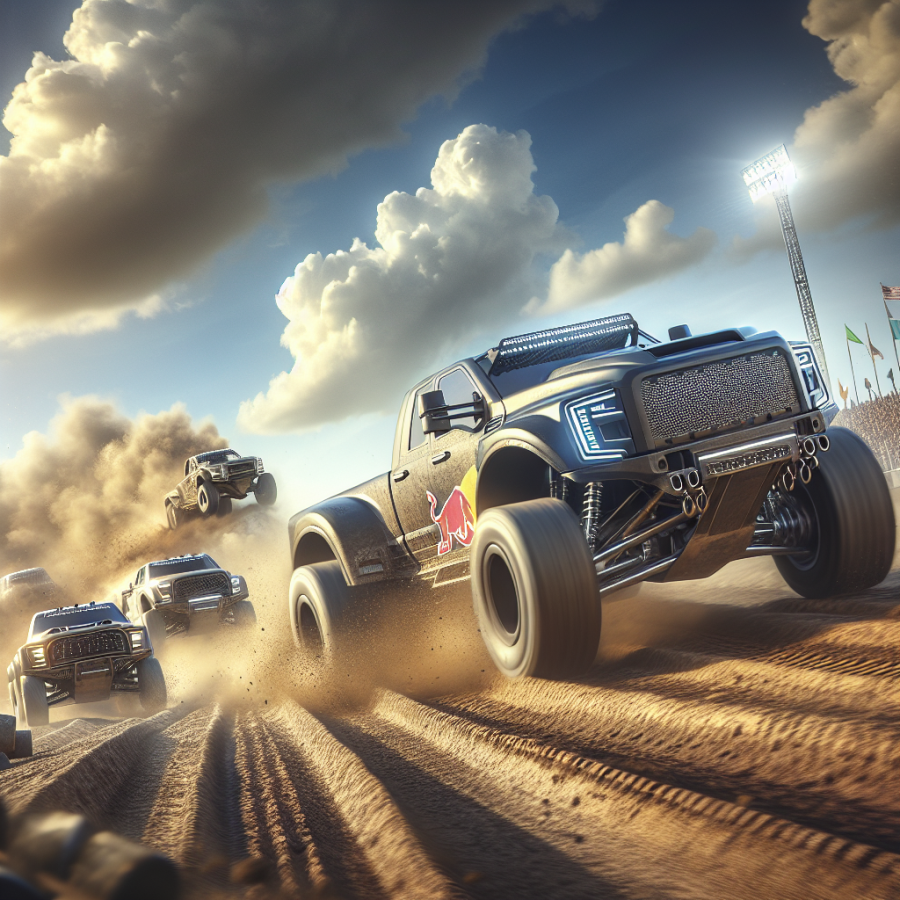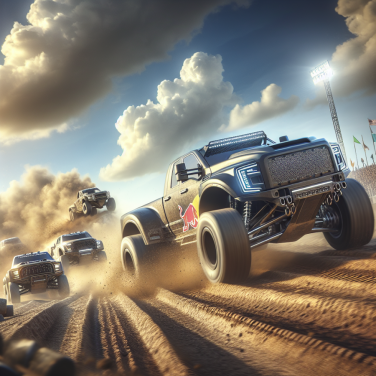From Big Rigs to the Big Time: The Speeding Popularity of Truck Racing Leagues
Truck racing has rapidly become one of the most electrifying motorsports, attracting a fervent fan base and scores of drivers eager to prove their mettle behind the wheel of these hulking machines. No longer confined to the solitary highways, these big rigs have found a new calling on the racetrack, their transformation offering a spectacular show that combines raw power with surprising agility.
The transition from transport to competition hasn't been without its challenges. Engineers and mechanics put countless hours into converting these commercial vehicles into race-ready titans. Standard freight haulers are stripped down and transformed, their frames fortified and their engines tuned to produce staggering horsepower. It’s a craft that requires skill, ingenuity, and a deep understanding of the physics of speed and motion.
The races themselves are a testament to the skill of the drivers, who must maneuver the massive vehicles with precision and control. Unlike their smaller counterparts in traditional car racing, truck racing demands a unique blend of finesse and bravado to manage the sheer momentum of the vehicles. The thunderous roar of the engines as they tear down the track is a siren call to fans, who flock to the events for a taste of the adrenaline-fueled drama.
Safety, of course, is paramount. Despite the thrill of speed, race organizers and teams invest heavily in ensuring that both drivers and spectators are protected. Advances in roll cages, fire suppression systems, and safety harnesses have increased the safety of the sport, allowing drivers to push the limits while minimizing risk.
One of the primary appeals of truck racing is its accessibility. Fans who operate or manage these vehicles in their daily work feel a kinship with the racers, creating a community that is both inclusive and passionate. Events often feature fan zones, meet-and-greets, and interactive exhibitions, allowing supporters a close-up view of the trucks and an opportunity to engage with the stars of the sport.
Truck racing leagues have also become hotbeds for technological innovations that can extend beyond the racecourse. Manufacturers and sponsors see these competitions as a proving ground for advances in fuel efficiency, aerodynamics, and engine performance. The race trucks may serve as extreme examples, but the technology that propels them to victory can trickle down to the commercial trucks on the road, providing benefits in terms of sustainability and economy.
What’s more, the sport has begun to embrace sustainability in a bid to future-proof its appeal.
Read also:
Conquering the Slopes: A Beginner's Guide to Skiing Success
Shifting Gears in Motorsports: The Emergence of Competitive Truck Racing
Truck racing has long stood in the shadow of more glamorous motorsports like Formula 1 and NASCAR, but a paradigm shift in the racing fraternity has brought this adrenaline-pumping sport into the limelight. Trucks, the heavyweight behemoths of the road, are proving that they too can offer the high-speed thrills and spills that racing enthusiasts crave.
The evolution of competitive truck racing is a testament to the innovation and engineering prowess that has been poured into these machines. Unlike their commercial counterparts, race trucks are specially designed for speed, agility, and performance. Powered by turbocharged diesel engines capable of producing a staggering 1,000 horsepower, these trucks can accelerate from 0 to 100 km/h in under five seconds, rivaling some of the more traditional racing vehicles in terms of performance.
Manufacturers have played a significant role in truck racing’s emergence. Companies like Volvo, MAN, and Mercedes-Benz have been at the forefront, each vying for dominance on the racetrack. The evolution of truck racing also underscores the shift in focus towards more unusual, niche forms of motorsports. This diversification appeals to a broader audience and paves the way for a more inclusive motorsport culture.
The technical regulations in truck racing are quite strict, ensuring fair competition and the safety of drivers. Trucks are limited in weight, with a minimum weight of 5,500 kg, and must comply with stringent rules regarding dimensions and engine capacity. This has led to a competitive environment where driver skill and team strategy are crucial factors in winning races, much like any other motorsport.
The races themselves are high-octane events with trucks going wheel-to-wheel on some of the most famous circuits. The sight of these behemoths taking sharp turns and overtaking each other is not only thrilling but also a showcase of the drivers' dexterity and the advanced technologies embedded in the trucks. Race formats often include a series of short sprints and a longer endurance race, testing the ability of drivers to maintain high performance under intense conditions.
Moreover, the sport provides a unique marketing platform for the trucking industry. It demonstrates the durability and performance of the trucks in the most challenging conditions, reflecting the reliability customers can expect from these brands. This resonates well with the industry stakeholders and helps in forging a closer connection between the fans and the manufacturers.




